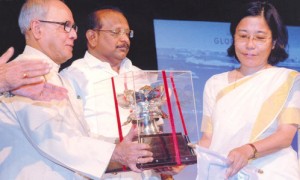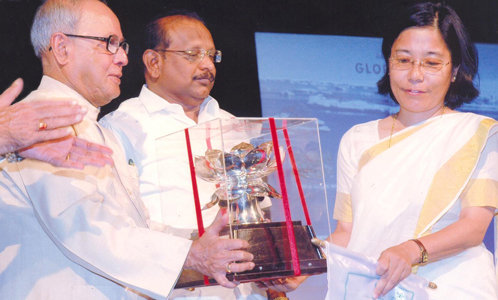
The winner of the 2007 Indira Gandhi Paryavaran Puraskar prize, India’s highest Environmental award, Sitling, explains to Neeta Lal for The Guardian Weekly how she went about achieving her mission. Excerpts from the article:
For starters, we cobbled an eco-development committee (EDC) comprising the local people, especially women and hired garbage collectors who worked on a monthly salary of 1,000 rupees (about GBP11) with an additional commission of 5 rupees per garbage bag. After working tirelessly for 14 months, my team collected a whopping 44 tons of garbage in 14,000 gunny bags. The collected garbage matched the surrounding towering peaks in height.
This garbage was transported on horseback to New Delhi for recycling. The heaps also included tons of mule dung because about 500 mules go up and down this religious stretch from May to October each year – the main five pilgrimage months. Despite the garbage’s volume, we didn’t take any eco-unfriendly short cuts like burning, burying or draining off of refuse.
Cleaning up the area was only part of the problem. A greater challenge lay in convincing the resident business population of about 76 families to demolish their 400 shacks and morph them into 76 shops; that is, one shop per family. This, I argued, would help in the management of the ecologically sensitive area. The entrepreneurs, adamant at first, finally relented and demolished their shacks to build well-equipped shops with proper infrastructure.
Jyotsna’s brave crusade bore fruit in 2005 when she got a call from UNESCO informing her that VFNP was being granted World Heritage Status. This was an excellent example of what a community can achieve when they put together their efforts and collaborate for the common good. Now the region abounds in nature’s bounty and attracts tourists from all over the world.
Read the complete article here.
Image Courtesy: The Guardian Weekly
If you found our stories insightful, informative, or even just enjoyable, we invite you to consider making a voluntary payment to support the work we do at The Better India. Your contribution helps us continue producing quality content that educates, inspires, and drives positive change.
Choose one of the payment options below for your contribution-
By paying for the stories you value, you directly contribute to sustaining our efforts focused on making a difference in the world. Together, let's ensure that impactful stories continue to be told and shared, enriching lives and communities alike.
Thank you for your support. Here are some frequently asked questions you might find helpful to know why you are contributing?

